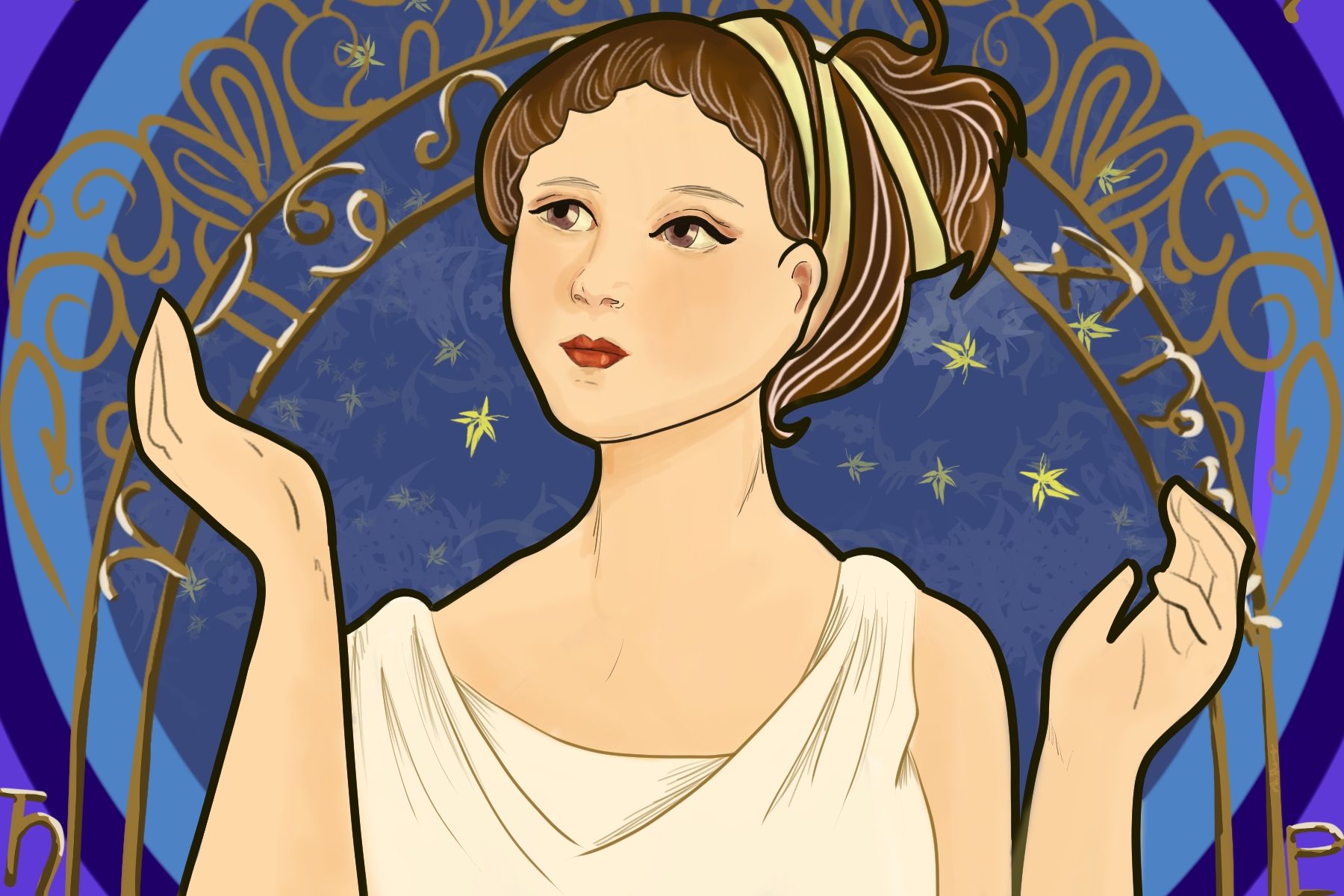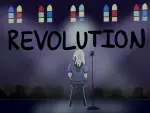The world may seem like a scary place. Everyday life is hard enough, but times are even more difficult, especially now, as Coronavirus disease 2019, or COVID-19, has unleashed a sudden panic. Academic institutions have either gone online or shut down completely, unemployment is at an all-time high and the government has mandated social distancing from family and friends. Amidst unsettling uncertainty during the current global pandemic, you deserve answers for such seemingly random chaos. Thankfully, an explanation of the world’s cycles and patterns is readily available to you via a direct source: astrology.
Depending on who you are, the word “astrology” brings up a wide variety of responses. You might already be a mystic, interested in the occult realm and its guide into what the stars have to say about you. Maybe you consider yourself a skeptic, inclined to take anything with a grain of salt that is unproven by science. Or, you may find yourself in the middle of the spectrum, unbothered and unaffected. However, regardless of where you fall on the scale of belief, astrology’s influence on our current pop culture is here to stay.
From memes to podcasts to YouTube channels, an empire of social media accounts centered on astrology have emerged forth into the limelight. Some accounts seek to inform and educate. Others are based on the sole purpose of entertainment. While there’s nothing wrong with relatable memes and funny videos, for astrology’s devoted believers, the truth found within the ancient practice is potent and real.
https://www.instagram.com/p/B-6tRWHnv62/
Many astrologers today choose to focus their study into gaining insight on individuals’ personality traits and behavioral patterns. However, astrology originally developed with the intention of delving even deeper via mundane astrology. The term “mundane” derives from the Latin word for world, “mundus,” meaning that the offshoot of astrology examines geographical locations, government systems and major world events.
The examination of world events allows astrologers to conjure predictions based on the planets’ current and future movements. As every planetary body floating in the sky sits in any one of the 12 signs of the Zodiac, the planets also exist within angular relationships to each other called “aspects,” such as conjunction (0°), opposition (180°) and square (90°) — basic geometry that you’re likely already familiar with. Aspects between two or more planets dictate just how they interact and influence the world’s goings-on. Astrologers’ predictions depend on the combination of planetary aspects, Zodiac signs and themes surrounding the planets involved.
Before 2020 started, astrologers took particular interest in the year’s planetary aspects. While the outbreak of COVID-19 itself wasn’t exactly written out in black-and-white amongst the stars, a few aspects foretold of our current hour of social isolation, a redrawing of boundaries and an overall looming heaviness. The virus’s spread poked gaping holes into many countries’ economic infrastructures and health care systems. There are two planets especially responsible for COVID-19’s cumbersome repercussions: Saturn and Pluto. Saturn rules government structures, limitations and seclusion while Pluto rules death, rebirth, transformation and paranoia.
History maps out quite a few instances of the two outer planets joining forces. This aspect is known as “conjunction,” indicating they sit right next to each other in the sky — their energies pool together, creating a potent connection. In the past, Saturn and Pluto’s meeting ignited social change, unprecedented restructuring and redistribution of power.
Astrologer Mela Luna sheds light on important historical moments that overlapped with the two planets’ conjunction. While many events from history’s entire run could be named, two examples of world-changing Saturn-Pluto meetups took place at the beginning and end of the twenty-first century: in 1914, with the start of World War I and the redrawing of Europe’s borders, and in 1982, as both unemployment rates spiked to their highest level since the Great Depression, and the CDC finally put a name to the AIDS virus as it began reaching epidemic levels of devastation. You can see now that 2020 isn’t the first time Saturn and Pluto affected the health of millions — it’s simply taking place in its newest form as COVID-19.
Let’s map out a few key dates and events of 2020 as aligned with the planets’ movements.
January 10-12: Saturn Conjunct Pluto
Saturn and Pluto had been lingering in their current conjunction for the past two years. But from Jan. 10-12 of this year, the conjunct became exact; they finally united in the 22-degree mark of the wintry earth sign, Capricorn. Considering the weighty themes that the two planets rule over, many astrologers foretold of serious social changes to come in the months following. Amy Tripp, an astrologer popular on Twitter, associates Saturn conjunct Pluto with “harsh conditions, fear, government control, change of existing institutional structures, making do with less, challenging life tests.” It’s no surprise that almost simultaneous to the aspect’s occurrence, the World Health Organization (WHO) received detailed information from the Chinese government surrounding COVID-19, including the virus’ official identification on Jan. 7.
February 16: Mars Enters Capricorn, Joining Saturn and Pluto
As the year continued, the planet of motivation and drive, Mars entered Capricorn on Feb. 16, joining Pluto and Saturn. Anything to do with Mars propels the current state of the planets further into forward action. The same date the intense, red planet entered Capricorn also marked the beginning of the WHO’s Joint Mission, a project involving experts from around the world created to “rapidly inform” on what’s to happen next surrounding COVID-19. Mars doused gasoline on anything to do with the virus’s already-lit fire.
March 10: Mercury Stations Direct
Throughout the first few months of the year, COVID-19’s severity was not at all fully realized — college students on spring break kept the party alive in Miami and travelers purchased cheap flights left and right. Alongside the virus’s development, the planet of communication and travel, Mercury, was retrograde, a time where not all the facts are present and key information is missing. But the fast-moving planet left its retrograde motion and stationed direct on March 10. Only a day later, the WHO finally characterized the novel outbreak as a pandemic.
April 4: Jupiter Conjunct Pluto
As Saturn, Pluto and Mars came together in the sea goat’s sign, Jupiter was also moving further into Capricorn — especially toward Pluto. Just like Saturn and Pluto in January, Jupiter and Pluto’s meetup combines the two planets’ energies. Although the exact conjunction hit on April 4, the effects had been in play for quite some time because of the aspect’s close proximity. Jupiter rules growth and expansion, therefore it amplifies anything it’s close to. The planet’s expansive powers typically bring forth abundance, but, because of the darker planet Pluto’s involvement, the Jupiter-Pluto conjunction only made for a fertile breeding ground for more COVID-19 outbreaks. Both planets move quite slowly, so the union of their energy is set to continue well into November.
Taking a deeper look, the astrology of 2020 unweaves the complicated web strung by the novel coronavirus. Take caution, however, not to fall prey to believing you’re at the mercy of uncontrollable planetary movements. The maxim of astrology, “As above, so below,” seeks to remind you that the heavens are simply a mirror of the Earth and vice versa. Proper interpretation of astrology, the language of the sky, sheds light on the planets’ continuous cycles of life’s sole constant: change.
The changes of COVID-19 may force you to confront an overall lack of control and the fragility of life — but now more than ever, it’s time to help and allow yourself to be helped. Your fellow human needs you. Despite the current state of quarantine, connection is still completely possible. Even if it’s a short FaceTime call with a friend who is miles away or a social-distancing walk with a neighbor. By joining together in the face of the pandemic, you’ll feel even a small amount of weight lifted off your shoulders.

















